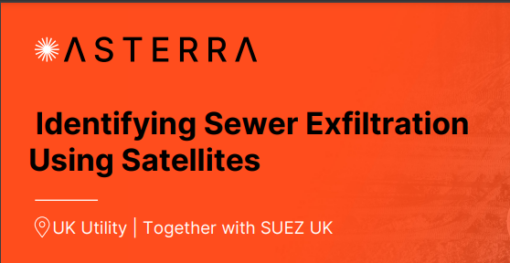SCROLL FOR MORE INFO

The city of Garland is a municipality northeast of Dallas, Texas with a population of 242,000 residents (see Figure 1). It has 113,000 total service connections of which 92,700 are active or inactive retail metered connections. The city has 972 miles of pipe mains and delivers approximately 30 MGD to its customers. Garland’s system employs two pressure zones utilizing eight ground storage tanks and four elevated storage tanks comprising 49 million gallons of capacity.
In 2021 the city retained the services of ASTERRA to provide satellite surveys of the water system to identify areas with leak probabilities. ASTERRA’s technology utilizes specialized radar signals taken from a satellite to scan an area of interest and collect the resulting reflected signals. These signals are analyzed and processed to identify specific indicators of wet soil saturated with potable water, screening out the signal noise and other interferences.
A total of 78 crew days were spent inspecting the LLLs, searching for leaks that contribute to the lost water. A total of 232.1 MGY of water loss was recovered based on the leaks identified in this manner. Thus, each day a crew spent searching for leaks generated 2.9 MGY of water loss reduction, or effectively new supply. This lost water can be used to meet additional demand in the system without the need for additional aquifer withdrawals, wholesale purchases from other entities or new capital improvements. The City of Garland obtains all its water supply via treated water purchase from the North Texas Municipal Water District. These results show that crews spending days in the field searching for leaks using ASTERRA Recover generate valuable results.
The value of the water saved or recovered by the program is calculated using the volume of water saved and the cost of water production. The volume of water saved was estimated to be 0.636 MGD or 232.1 MGY. The cost of water production is the price the city pays WTMWD for treated water, $3000 per MG. Thus, the value of water saved is $696,000 per year. The simple payback period is 3 months.
For the full case study, download below…
Download

